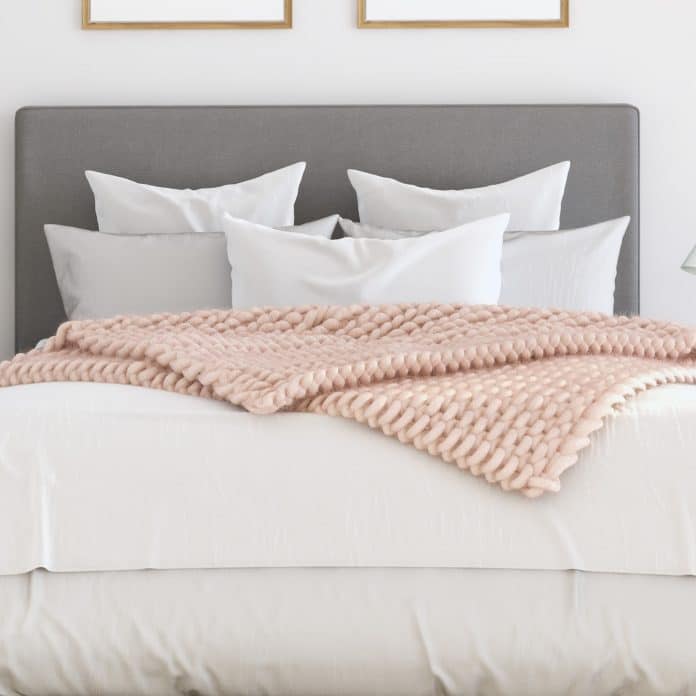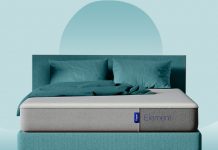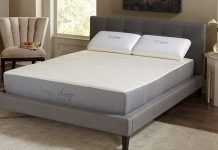Ah, the timeless question that seems to haunt us all at some point in our lives: how long does a mattress last? We’ve all been there, tossing and turning in the dead of night, wondering if it’s time to bid farewell to our faithful sleep companion.
But fear not, dear reader, for we have embarked on a quest to unravel the secrets of mattress longevity, bringing you the answers you seek. Prepare to be enlightened as we navigate the realm of sleep goods and uncover the truth about the lifespan of our cozy retreats.
Review contents
Factors that influence mattress lifespan
Quality of materials
The quality of materials used in a mattress significantly affects its lifespan. A mattress made with high-quality materials will likely last longer than one made with lower-quality materials. It’s essential to look for mattresses that use durable and long-lasting components, such as high-density foam, strong coils, and natural latex.
Level of use
The amount of use a mattress receives can impact its lifespan. A mattress that is used every night will naturally wear out faster compared to one that is used less frequently. Additionally, factors such as the sleeper’s weight, the number of people sharing the bed, and any vigorous activities on the mattress can contribute to its wear and tear.
Maintenance and care
Proper maintenance and care can significantly extend the lifespan of a mattress. Regular spot, and deep cleaning helps remove dirt, sweat, and allergens that can degrade the materials over time. A mattress protector can also protect against spills and stains, preventing any damage to the mattress. Maintaining proper support, such as using a suitable bed frame or foundation, can help evenly distribute the weight and prevent premature sagging.
Type of mattress
Different types of mattresses have different lifespans due to variations in construction and materials. Innerspring mattresses, which have a coil support system, typically have an average lifespan of about 7-10 years. Memory foam mattresses, known for their contouring properties, can last 8-10 years. Latex mattresses, made from natural or synthetic latex, are known for their durability and can last upwards of 10-12 years. Hybrid mattresses, which combine innerspring coils with foam or latex layers, generally have a similar lifespan to memory foam mattresses.
The average lifespan of different mattress types
Innerspring mattresses
Innerspring mattresses, also known as coil mattresses, are among the most standard mattresses. These mattresses are constructed with a network of metal coils that provide support and structure. On average, innerspring mattresses have a lifespan of about 7-10 years. However, the exact lifespan can vary depending on factors such as the quality of the coils and the gauge of the wire used. Higher-quality innerspring mattresses with thicker coils tend to last longer than those with lower-quality materials.
Memory foam mattresses
Memory foam mattresses are known for their ability to contour to the body, providing personalized support and pressure relief. These mattresses are made from a viscoelastic foam that responds to heat and pressure. On average, memory foam mattresses have a lifespan of about 8-10 years. The foam quality can play a significant role in the mattress’s durability. Higher-density foam is generally more durable and long-lasting compared to lower-density foam. It’s essential to consider factors such as foam density and thickness when evaluating the potential lifespan of a memory foam mattress.
Latex mattresses
Latex mattresses are made from natural latex, derived from the sap of rubber trees, or synthetic latex, produced using petroleum-based materials. Latex mattresses are known for their durability and resilience. On average, latex mattresses have a lifespan of 10-12 years. Natural latex mattresses tend to be more durable compared to synthetic latex mattresses. The quality and processing methods used to produce the latex can also impact the mattress’s lifespan. Overall, latex mattresses offer a longer lifespan than many other types.
Hybrid mattresses
Hybrid mattresses combine the support and structure of innerspring coils with foam or latex’s comfort and pressure-relieving properties. These mattresses typically have a multi-layer construction, with the coils forming the core support system and the foam or latex layers providing comfort and cushioning. The average lifespan of a hybrid mattress is similar to that of a memory foam mattress, around 8-10 years. However, the lifespan can vary depending on the specific materials used in the hybrid mattress. Higher-quality components like high-density foam and durable coils can contribute to a longer lifespan.
Signs that indicate it’s time to replace your mattress
Sagging or visible indentations
One of the most noticeable signs that it’s time to replace your mattress is sagging or visible indentations. Over time, the materials in a mattress can break down and lose their shape, leading to uneven support and an uncomfortable sleeping surface. Suppose you notice significant sagging or visible indentations in your mattress, especially in the areas where you sleep. In that case, it indicates that the mattress has reached the end of its lifespan.
Uneven or lumpy surface
If your mattress has developed an uneven or lumpy surface, it can significantly affect your comfort and quality of sleep. This can occur due to the breakdown of materials or the shifting of internal components. When the surface of the mattress becomes uneven or lumpy, it can cause discomfort and result in poor spinal alignment. If you constantly shift positions throughout the night to find a comfortable spot, it’s a sign that your mattress may need to be replaced.
Increased allergies or asthma symptoms
An aging mattress can become a breeding ground for allergens like dust mites, mold, and mildew. These allergens can trigger allergic reactions and worsen asthma symptoms. If you notice an increase in allergies or asthma symptoms, such as coughing, sneezing, or wheezing, it may be a sign that your mattress needs to be replaced. Investing in a hypoallergenic mattress or a mattress protector can help reduce the accumulation of allergens and improve indoor air quality.
Persistent back or joint pain
A worn-out mattress can lead to persistent back or joint pain. As the materials in the mattress break down, they may no longer provide adequate support, causing pressure points to develop. This can result in discomfort, pain, and stiffness, especially in the lower back, hips, and shoulders. If you consistently wake up with back or joint pain that improves throughout the day, it’s a strong indicator that your mattress no longer provides the necessary support and may be time for a replacement.
Disrupted sleep or lack of comfort
The primary function of a mattress is to provide a comfortable and supportive sleeping surface. Find yourself constantly tossing and turning throughout the night, struggling to find a comfortable position, or waking up restless and unrested. It may be a sign that your mattress can no longer meet your sleep needs. Disrupted sleep or a lack of comfort can significantly impact your overall well-being and daily functioning. If you consistently experience these issues, it’s worth considering a new mattress.
Warranty expiration
Many mattresses have a warranty covering manufacturing defects and premature wear. The warranty length can vary depending on the manufacturer and the specific mattress model. If your mattress is nearing the end of its warranty period, it can serve as a reminder to assess the condition of your mattress and evaluate if it’s time for a replacement. While a warranty expiration does not automatically mean that the mattress needs to be replaced, it’s worth taking a closer look at it to ensure it still provides the necessary comfort and support.
Ways to extend the lifespan of your mattress
Use a mattress protector
Using a mattress protector is an essential step in prolonging the lifespan of your mattress. A mattress protector acts as a barrier, preventing spills, stains, and dirt from penetrating the mattress. This helps maintain the integrity of the materials and keeps the mattress fresh and clean. A mattress protector can also guard against allergens, dust mites, and bed bugs, providing a healthier sleep environment. Choosing a waterproof and breathable mattress protector that fits securely and is easy to remove and clean is essential.
Rotate and flip the mattress.
Rotating and flipping your mattress can help distribute the wear and pressure more evenly, prolonging its lifespan. The frequency of rotation and flipping depends on the specific mattress type and manufacturer’s recommendations. Generally, it’s recommended to rotate the mattress every 3-6 months and flip it every 6-12 months. This prevents the same areas of the mattress from constantly bearing weight and reduces the likelihood of sagging and indentations. Refer to the mattress manufacturer’s guidelines for proper rotation and flipping techniques.
Avoid sitting on the edges.
Sitting on the edges of a mattress repeatedly can cause premature sagging and damage the support system. The edges of the mattress are not designed to bear the total weight of a sitting position for extended periods. To extend the lifespan of your mattress, it’s best to avoid sitting or placing excessive weight on the edges. If you need to sit on the edge of the bed occasionally, try to distribute your weight as evenly as possible or use additional support, such as a sturdy chair or stool.
Regularly clean and vacuum
Regular cleaning and vacuuming of your mattress can help remove dirt, dust, and allergens, preventing them from accumulating and degrading the materials over time. Spot cleaning spills and stains as soon as they occur can prevent them from setting in and causing permanent damage.
Using a mild detergent and warm water, gently blot the affected area, careful not to soak the mattress. Consider using a mattress cleaner specifically designed to remove allergens and odors for deep cleaning. Vacuuming the mattress regularly, ideally every few months, can help eliminate dust and allergens that have settled on the surface.
Avoid jumping or pounding on the mattress.
While using the mattress as a trampoline or engaging in rough play may be tempting, this can cause significant damage and shorten its lifespan. Jumping or pounding on the mattress can strain the internal components, causing them to wear out more quickly. It can also lead to sagging, indentations, and structural damage. To protect your mattress and ensure its longevity, avoiding activities that put excessive stress on it is essential.
Maintain proper support
Adequate support is essential for the longevity of a mattress. A suitable bed frame or foundation can provide the necessary support and prevent sagging. The type of support system required depends on the specific mattress type. For example, memory foam mattresses typically require a solid, flat surface, while innerspring mattresses benefit from a sturdy foundation or box spring. It’s essential to check the manufacturer’s guidelines and recommendations for proper support to ensure your mattress remains in good condition.
Tips for choosing a durable mattress
Research different brands and models
Researching different brands and models is crucial in selecting a durable mattress. Look for reputable brands that have a track record of producing high-quality mattresses. Reading customer reviews and ratings can provide insights into the durability and performance of different mattresses. Additionally, consider factors such as the materials used, construction methods, and overall reputation of the brand. Researching and comparing options can help you make an informed decision and choose a mattress that is built to last.
Consider the warranty and return policy.
The warranty and return policy offered by the mattress manufacturer can provide peace of mind and protection in case of manufacturing defects or premature wear. A more extended warranty period generally indicates the manufacturer’s confidence in the durability and quality of their product. Familiarize yourself with the terms and conditions of the warranty, including any limitations or requirements. Additionally, review the return policy to ensure you can return or exchange the mattress if it does not meet your expectations.
Test the mattress in-store
Before making a final decision, testing the mattress in-store is essential. Lie down on the mattress in your preferred sleeping position and evaluate the comfort and support it provides. Please consider how the mattress contours to your body and whether it relieves pressure points. Testing the mattress in-store allows you to assess the overall feel and determine if it meets your preferences and needs. While testing a mattress in-store can provide valuable insights, remember that the actual test of durability can only be determined over time.
Read customer reviews and ratings.
Customer reviews and ratings offer valuable information about the durability and performance of a mattress. Reading about other people’s experiences can provide insights into sagging, durability, and overall satisfaction. Look for patterns or consistent feedback regarding the longevity of the mattress. Remember that individual experiences may differ, and it’s essential to consider a range of opinions to make an informed decision.
Consult with a sleep expert.
Consulting with a sleep expert, such as a mattress specialist or a chiropractor, can provide valuable guidance in selecting a durable mattress. These professionals have knowledge and experience in mattress selection and can offer personalized recommendations based on your needs and preferences. They can help assess factors such as your sleeping position, body weight, and any existing health conditions to guide you toward a mattress that provides optimal comfort, support, and durability. Seeking expert advice can help ensure you choose a mattress well-suited to your requirements.
I have frequently asked questions about mattress lifespan.
Can a mattress last a lifetime?
While some mattresses are advertised as lasting a lifetime, the reality is that most mattresses have a finite lifespan. The average mattress lifespan ranges from 7-12 years, depending on factors such as the type of mattress, quality of materials, and level of use. Over time, the materials in a mattress degrade, lose their supportiveness, and may develop issues such as sagging or indentations. It’s essential to evaluate the condition of your mattress regularly and replace it when signs of wear and discomfort become apparent.
Does the weight of the sleeper affect the mattress’s lifespan?
The weight of the sleeper can impact the lifespan of a mattress. Heavier individuals exert more pressure on the mattress, leading to accelerated wear and compression of the materials. This can result in sagging, loss of support, and a shorter lifespan for the mattress. To ensure the longevity of a mattress, it’s essential to choose a mattress with appropriate support and consider factors such as weight limits and density. Additionally, regularly rotating and flipping the mattress can help distribute the pressure more evenly and extend its lifespan.
Can a mattress be repaired instead of replaced?
In some cases, it may be possible to repair specific mattress issues instead of replacing the entire mattress. For example, a mattress with a minor tear or a broken zipper may be repairable. However, repairs may not be feasible or cost-effective for major issues such as sagging, loss of support, or significant wear. It’s essential to assess the severity and nature of the problem and consult with a professional to determine if repair is a viable option. In many cases, replacing the mattress may be the best solution for long-term comfort and support.
What can I do with an old mattress?
When it’s time to replace your mattress, there are several options for responsibly disposing of the old one. Many municipalities have recycling programs that accept old mattresses and recycle their components. You can also check with local charities or organizations to see if they accept mattress donations, provided the mattress is in good condition. If neither recycling nor donation is possible, some waste management facilities may accept mattresses for a fee. It’s important to research local regulations and options for mattress disposal to ensure proper and eco-friendly methods are followed.
Summary
Various factors, including the quality of materials, level of use, maintenance, and care, and the specific type of mattress, influence the lifespan of a mattress. Innerspring mattresses typically last around 7-10 years, while memory foam and latex mattresses have an average lifespan of 8-12 years. Hybrid mattresses fall within a similar range as memory foam mattresses.
Signs that indicate it’s time to replace your mattress include sagging, visible indentations, an uneven or lumpy surface, increased allergies or asthma symptoms, persistent back or joint pain, disrupted sleep or lack of comfort, and warranty expiration. To extend the lifespan of your mattress, use a mattress protector, rotate and flip the mattress regularly, avoid sitting on the edges, clean and vacuum regularly, avoid jumping or pounding on the mattress, and maintain proper support.
When choosing a durable mattress, research different brands and models, consider the warranty and return policy, test the mattress in-store, read customer reviews and ratings, and consult a sleep expert. Frequently asked questions about mattress lifespan include whether a mattress can last a lifetime (most do not) and if the sleeper’s weight affects mattress lifespan (it can, especially for heavier individuals).
While some mattress issues may be repairable, major issues often require mattress replacement. Options for disposing of an old mattress include recycling, donating, or using waste management facilities.
By understanding the factors that influence mattress lifespan and implementing proper care and maintenance, you can ensure that your mattress provides optimal comfort and support for years.































